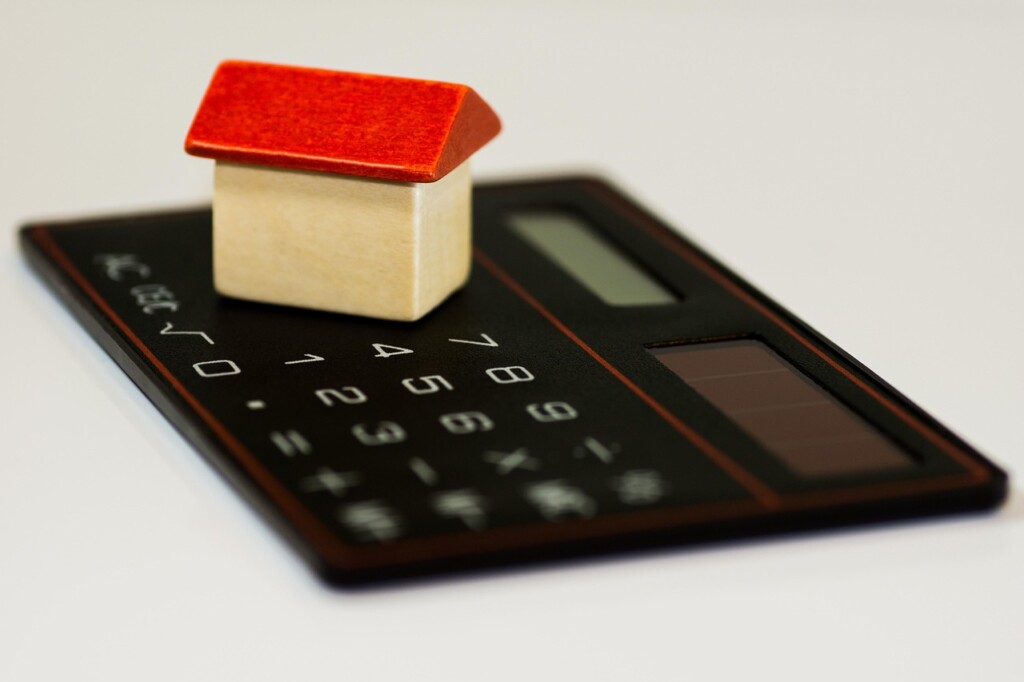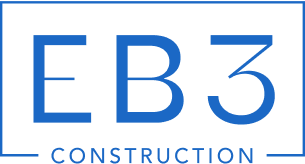Selecting the right construction method is one of the first critical decisions we guide clients through on any retail project. This choice determines not only how much you’ll invest per square foot but also how quickly you can open, the ease of adapting the space over time, and how effectively the building withstands local climate and code requirements.
Whether you’re developing a neighborhood strip mall or a flagship big-box store, we help you understand the cost, speed, and performance trade-offs of each approach—pre-engineered metal buildings, metal-stud framing, structural steel, or tilt-up concrete. This understanding sets the stage for smarter budgeting and smoother project delivery.
In this guide, we’ll break down the key financial factors behind each system and highlight operational considerations, enabling retail owners and developers to make informed, future-proof construction choices.
Retail Construction Methods & Cost Considerations

When planning retail construction projects, the building method selected becomes a pivotal cost factor. At EB3 Construction, we evaluate each approach to offer distinct advantages tailored to various retail environments, from strip malls to big-box stores. Our construction team helps clients optimize upfront investment while maximizing long-term building performance.
Pre-Engineered Metal Buildings (PEMB)
For retail projects with tight budgets and straightforward design requirements, we often recommend pre-engineered metal buildings as an economical solution. These structures typically range from $70 to $300 per square foot, depending on the project’s scope, location, and materials. Prefabricated components streamline assembly, reducing on-site labor and accelerating project timelines.
We find PEMB systems particularly suitable for retail warehouses, standalone stores, and automotive service centers prioritizing quick openings. While architectural flexibility might be limited, these buildings offer clear-span interiors, maximizing usable space for retail operations.
Metal Stud Frame Construction
Our team frequently suggests metal stud framing for projects balancing cost efficiency and design versatility, typically costing between $75 to $310 per square foot. Utilizing lightweight, galvanized steel components, this method resists fire, pests, and warping. It is particularly advantageous for retail tenants in shopping centers or strip malls that require customizable storefronts and interiors.
We note that metal stud framing durability can also lead to lower maintenance costs over time. Additionally, this method supports various exterior finishes, facilitating distinctive brand facades without compromising structural integrity.
Structural Steel Framing
Structural steel framing, typically ranging from $100 to $340 per square foot, may involve higher initial costs but offers extensive design flexibility and superior load-bearing capacity. We recommend this method for flagship retail locations and anchor tenants requiring expansive interior spaces, mezzanines, or unique architectural features.
Our experience shows structural steel’s robustness facilitates future modifications, essential for retail spaces that must adapt to evolving market demands. Efficient coordination with steel fabricators ensures precise scheduling, minimizing on-site modifications and maintaining project timelines.
Tilt-Up Concrete Construction
For substantial retail developments, such as shopping centers and big-box stores, we advocate tilt-up concrete construction, with costs typically ranging from $135 to $385 per square foot. Concrete panels, cast horizontally on-site and tilted into place, offer energy efficiency through thermal mass and durability against severe weather, reducing long-term maintenance.
We emphasize careful coordination around weather conditions and crane logistics for tilt-up projects, ensuring efficient concrete pouring and panel erection. This method provides excellent fire ratings and enhanced security, critical for protecting retail inventory and infrastructure.
How Do Regional Factors Affect Retail Building Costs?
At EB3 Construction, we understand that geographic location significantly impacts retail construction pricing. Regional variations can lead to substantial differences in overall project costs, requiring careful budgeting and planning tailored to each market.
Eastern US Retail Construction Costs
In the Eastern US, particularly dense urban centers, construction costs tend to be higher due to logistical complexities, union labor requirements, and challenging site conditions. We factor in these regional nuances, including extended permitting processes and seasonal weather impacts, to effectively manage schedules and budgets.
Western US Construction Landscape
The West Coast, especially California, presents unique cost considerations influenced by seismic requirements, environmental regulations, and limited buildable land. At EB3 Construction, we employ specialized value engineering techniques to manage costs without sacrificing quality and compliance in these demanding markets.
Midwest Construction Considerations
The Midwest offers a comparatively moderate cost environment. However, recent price fluctuations in materials require careful planning. Our team accounts for labor availability differences between metropolitan and rural areas, and we strategize around seasonal temperature extremes to maintain project efficiency.
Southern US Building Economics
The Southern US often provides favorable conditions for retail construction projects, including extended construction seasons and competitive labor markets. Yet, coastal locations demand specialized hurricane-resistant construction techniques. At EB3 Construction, we incorporate these requirements into our regional budgeting and project planning to ensure robust, cost-effective outcomes.
What Additional Costs Should Retail Building Projects Budget For?

At EB3 Construction, we emphasize that base construction expenses represent only part of the overall investment for retail projects. Comprehensive budgeting must consider additional critical costs to ensure accurate financial planning and project success.
Financing Costs
Retail projects typically involve significant capital, making financing costs a major budget component. Interest rates, loan origination fees, and financing structures substantially influence overall expenses. We assist clients in evaluating these financial factors early to optimize capital strategies.
Permit and Inspection Fees
Permitting and regulatory expenses vary by location and complexity. At EB3 Construction, we navigate local permitting requirements, including specialized permits for electrical, plumbing, signage, and landscaping, ensuring efficient compliance and minimal delays. Impact fees, where applicable, are factored into our initial budgets.
Site Preparation Expenses
Site conditions significantly influence project budgets. Our thorough pre-construction assessments identify challenges related to grading, drainage, utility connections, environmental remediation, and demolition. We also consider water management solutions like detention ponds and advanced drainage systems essential for compliance and long-term site viability.
Professional Fees
Professional services, including architectural, engineering, construction management, and legal expenses, typically represent 8% to 12% of total construction costs. EB3 Construction coordinates closely with these professionals, optimizing their contributions while managing related expenses effectively.
Furniture, Fixtures, and Equipment
FF&E expenses vary widely by retail project type. EB3 Construction helps clients identify essential technology infrastructure, including POS systems, security equipment, and smart building controls, determining the optimal integration strategy to balance upfront costs and long-term operational effectiveness.
Contingency Planning
Effective budgeting includes contingency allowances, typically 5% to 10% of the project budget, to safeguard against unforeseen conditions and market fluctuations. At EB3 Construction, we recommend allocating additional allowances for uncertain areas, such as utility fees or tenant-specific requirements.
Long-Term Operational Considerations
We encourage clients to factor long-term operational costs into initial planning. Investing in energy-efficient systems, durable materials, and comprehensive commissioning programs may increase initial expenditures but deliver substantial long-term savings and operational efficiency.
Insurance Requirements
Insurance coverage during construction, including builder’s risk and general liability policies, is crucial. EB3 Construction ensures insurance alignment with financing requirements, providing adequate protection throughout construction and transition to operational phases, influencing long-term property insurance rates through strategic design recommendations.
What Are Effective Ways to Reduce Retail Building Construction Costs?
At EB3 Construction, effectively managing construction costs is central to the success of retail development projects. We implement several practical strategies throughout the planning and construction process to ensure budget adherence without compromising quality or timelines.
Strategic Planning and Design Decisions
Significant cost savings start in the planning phase. Our collaborative approach with clients and architects identifies opportunities to optimize space utilization, minimizing unnecessary square footage and reducing construction and operational expenses. We emphasize value engineering to balance design choices with functionality and cost-effectiveness.
Leveraging Construction Methodologies
Our experience shows the design-build method offers substantial cost efficiencies for retail clients, integrating design and construction under a unified team to minimize communication gaps and reduce change orders. Prefabrication techniques further enhance efficiency by allowing parallel workflow and accelerating construction timelines, particularly valuable in tight labor markets.
Material Selection and Procurement Strategies
Material costs significantly impact budgets. At EB3 Construction, we strategically select materials balancing upfront cost with long-term performance. We monitor market conditions closely, securing volatile materials early to avoid budget disruptions. Our established supplier relationships help negotiate favorable pricing, extended payment terms, and timely deliveries.
Systems and Operational Efficiency
Energy-efficient building systems represent investments yielding ongoing returns. Our team evaluates options such as high-performance HVAC, lighting systems, and smart building technologies to balance initial expenses with long-term savings. Digital tracking systems enable proactive budget management, addressing potential cost overruns early in the process.
Financial and Contractual Considerations
We analyze financing options to identify cost-effective solutions, considering alternatives like build-to-suit arrangements or developer partnerships. EB3 Construction employs transparent contract structures, such as guaranteed maximum price contracts with shared savings clauses, aligning contractor incentives with client budget goals. Our approach also optimizes insurance and bonding requirements, reducing unnecessary premium costs.
Building for Long-Term Value
Considering lifecycle costs, we advocate investing in durable materials, adaptable floor plans, and flexible infrastructure that accommodate future retail needs. These strategic choices, including sustainability initiatives, offer financial advantages through reduced maintenance, enhanced operational efficiency, and potential eligibility for incentives, delivering lasting value beyond initial construction.
Conclusion: Planning Your Retail Building Construction Budget

In retail construction projects, budget planning is foundational to project success. At EB3 Construction, we support clients by building robust financial strategies from the outset, helping avoid cascading issues that can arise from early budget miscalculations.
Retail construction requires balancing a wide array of variables—from material selection and labor markets to permitting requirements and contingency allocations. These considerations are why we believe every project deserves a customized budgeting approach rather than relying on generalized cost formulas.
In developing budgets, we prioritize transparency through preconstruction services, including thorough site evaluations, cost forecasting, and detailed MEP system analysis. We help clients navigate market volatility through adaptive procurement strategies that secure materials efficiently and cost-effectively.
For us, successful budgeting means not only accounting for initial construction costs but also optimizing long-term value. Through thoughtful planning and strategic value engineering, we aim to deliver projects that meet performance, aesthetic, and financial objectives.
Contact EB3 Construction to develop a comprehensive and customized budget for your next retail development.




